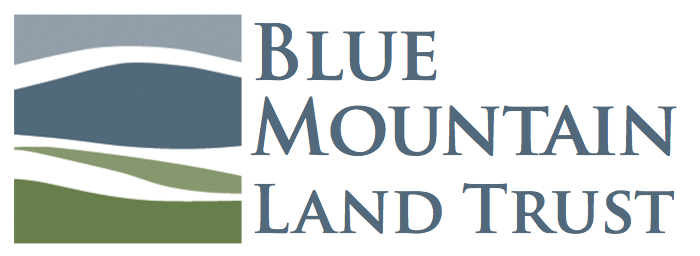Perspectives
What gives you hope for the future of the Blue Mountain region, and what do you believe the most impactful change could be?
“What gives me hope for the future of the Blue Mountain region is the incredible commitment of our partners and landowners to conserving and protecting the people, land, water, and wildlife that call this region home. I believe the most impactful change for protecting this region lies in expanding and uniting those who recognize its value. By sharing stories of the people, land, water, and wildlife of this region, we can inspire others to appreciate the significance of the Blue Mountain region and foster a lasting commitment to its protection.”
— Emma Erickson, BMLT Stewardship Associate
“When I first got involved with the Blue Mountain Land Trust, there were many overgrown and undeveloped trails in the region, and many of the thousands of acres today protected by BMLT were not yet protected. BMLT’s conservation and trail work over the last several years have enabled more people to connect with the natural beauty and vital resources of our region. Continued engagement across the community to expand access to the outdoors and protect our lands will be the most impactful work we can do here.”
— Emily Slusser, Energy Program Analyst, BMLT Board Member
“The reintroduction of fire into the Blue Mountains gives me great hope [an important land stewardship technique and traditional ecological practice used since time immemorial by Indigenous people in the area.] I think the most impactful change for the Blue Mountain region and greater Columbia River Basin would be the long awaited removal of the lower Snake River dams. Salmon re-colonized habitats in the upper Klamath within months, imagine the possibilities on the Snake.”
— Gabe Sheoships (Cayuse/Walla Walla); Executive Director, Friends of Tryon Creek; Co-founder of the Oregon Land Justice Project
“I find hope in the continued and expanding coordination efforts across agencies and landowners, paired with the passion people in the Blue Mountain region have for the landscape. We must passionately agree on the common goal of sustainable utilization of our natural resources by and for the benefit of all community members in order to encourage ecological resiliency and revitalize larger processes within our ecosystems. I believe conversations between natural resource agencies and the community fostered in this understanding will allow the most impactful changes to take center stage.”
— Elizabeth “Liz” Ruszczyk, Fisheries Restoration Monitoring Biologist & Program Manager, Confederated Tribes of the Warm Springs Reservation of Oregon
“Recent documented travels of dispersing gray wolves have confirmed our understanding of the critical ecological role of the Blue Mountain Front as a migratory corridor between the Northern Rockies, through central Oregon to California and places beyond. As our climate continues to rapidly alter the quality and location of essential habitats, fish and wildlife will have to adapt, move or perish. The Blue Mountain Land Trust will continue to play a central role in maintaining options for the movement of species through the targeted conservation of habitats and working landscapes in our region.”
— Carl Scheeler, Retired Wildlife Biologist, Confederated Tribes of the Umatilla Indian Reservation, & BMLT Founding Board Member






